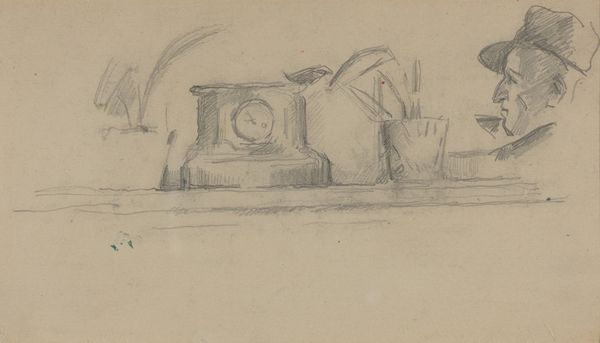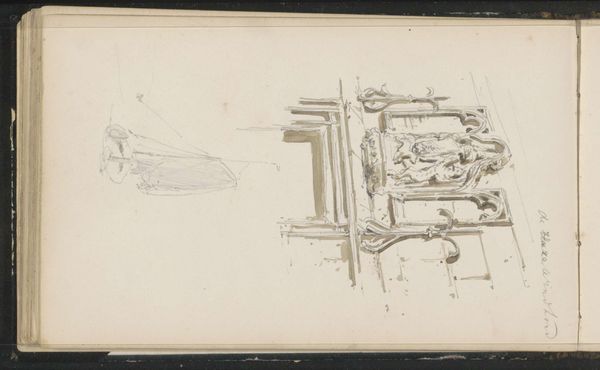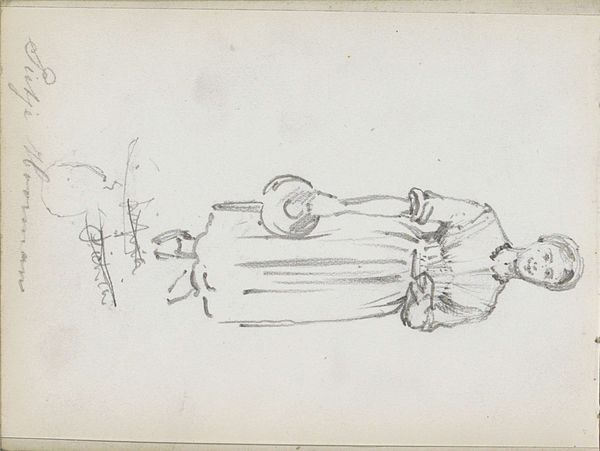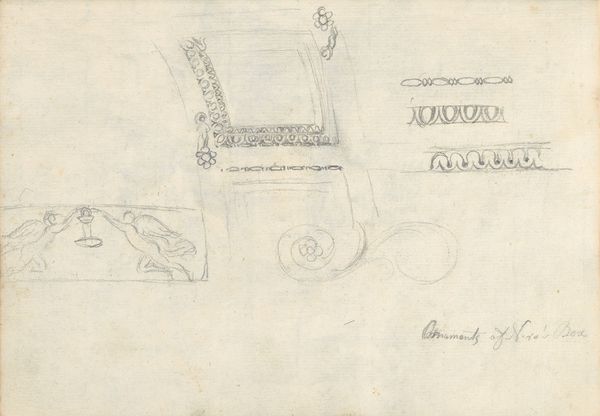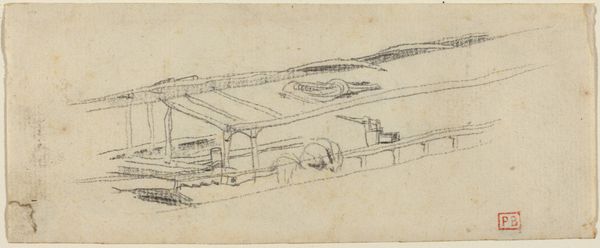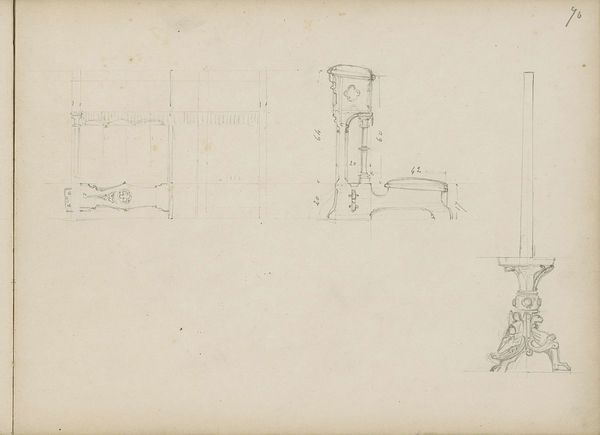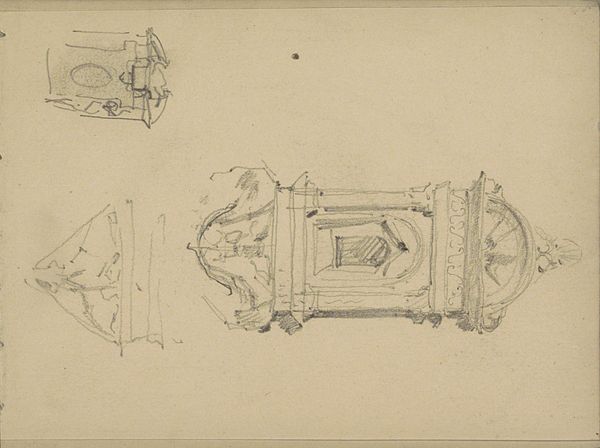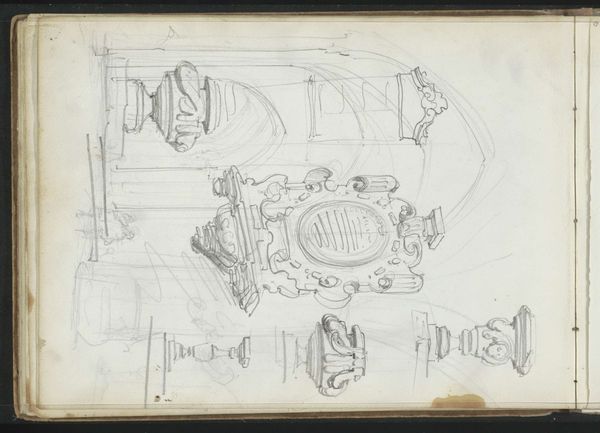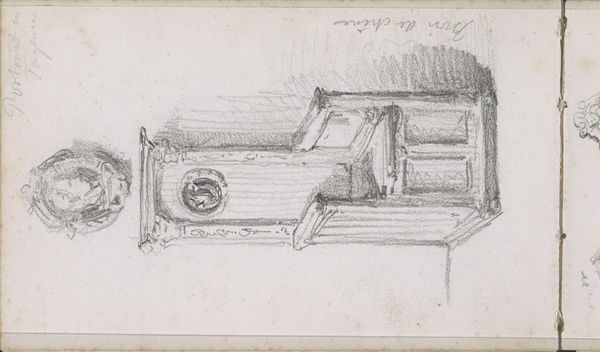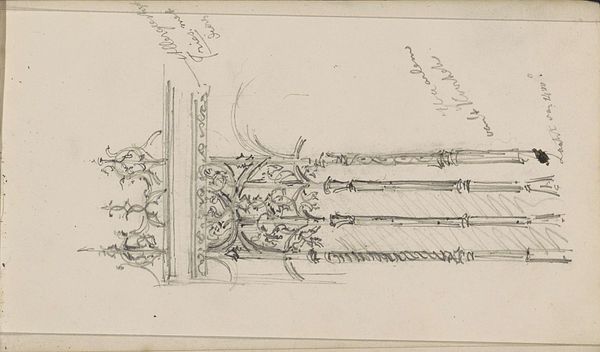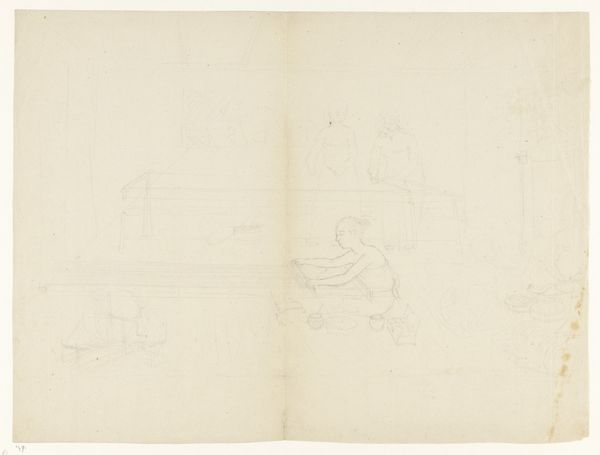
To sandstensvaser, den ene tom, den anden med en agarveplante. Gesims med profilering og pilastre med korintiske kapitæler 1865
0:00
0:00
drawing, pencil, architecture
#
drawing
#
landscape
#
classicism
#
pencil
#
academic-art
#
architecture
Dimensions: 163 mm (height) x 100 mm (width) (bladmaal)
Curator: This lovely pencil drawing from 1865 is by P.C. Skovgaard, and it's titled "To sandstensvaser, den ene tom, den anden med en agarveplante. Gesims med profilering og pilastre med korintiske kapitæler". It resides here at the SMK, Statens Museum for Kunst. What's your first impression? Editor: Utter serenity. It’s as if the architecture and plant life are holding their breath. The delicate pencil work makes it feel ephemeral, like a fleeting thought. Curator: Exactly. The drawing's restraint is so powerful, isn't it? Skovgaard was deeply engaged with classicism at this point in his career, and you see it here in the Corinthian capitals. He was, of course, primarily known for his landscapes, and that comes through as well. Notice how the agave almost spills out, challenging the strict architectural lines. Editor: The agave feels like a small act of rebellion against the rigid order, a symbol of natural resilience amidst the formality. And speaking of symbols, the vases—one empty, the other holding life. Is he suggesting a choice between barrenness and vitality, perhaps a reflection on artistic inspiration itself? Curator: Oh, that's lovely. Yes, a rumination on creativity...The classical elements provide the structure, the container if you will, and then the agave represents the flourishing idea. A particularly romantic concept of creativity as an untamed life force. Editor: Or maybe it's about time itself. The stone representing the enduring past, and the agave, the ever-changing present, rooted but reaching. The contrast really highlights how cultural memory interacts with the present moment. Curator: Beautiful. The classical motifs do speak of the enduring, and the seemingly casual sketch format emphasizes a transient quality, like capturing a fleeting impression rather than building a monument. I think he wanted us to reflect on the intersection of permanence and impermanence. Editor: It also makes me consider how we preserve memory through art and architecture, how certain symbols, like the Corinthian capitals, keep reappearing. The drawing itself becomes a vessel for remembering, reinterpreting the past for our present gaze. Curator: Precisely. It shows how looking back allows us to reflect and ultimately move forward. Editor: A reminder that even sketches can hold entire worlds.
Comments
No comments
Be the first to comment and join the conversation on the ultimate creative platform.
